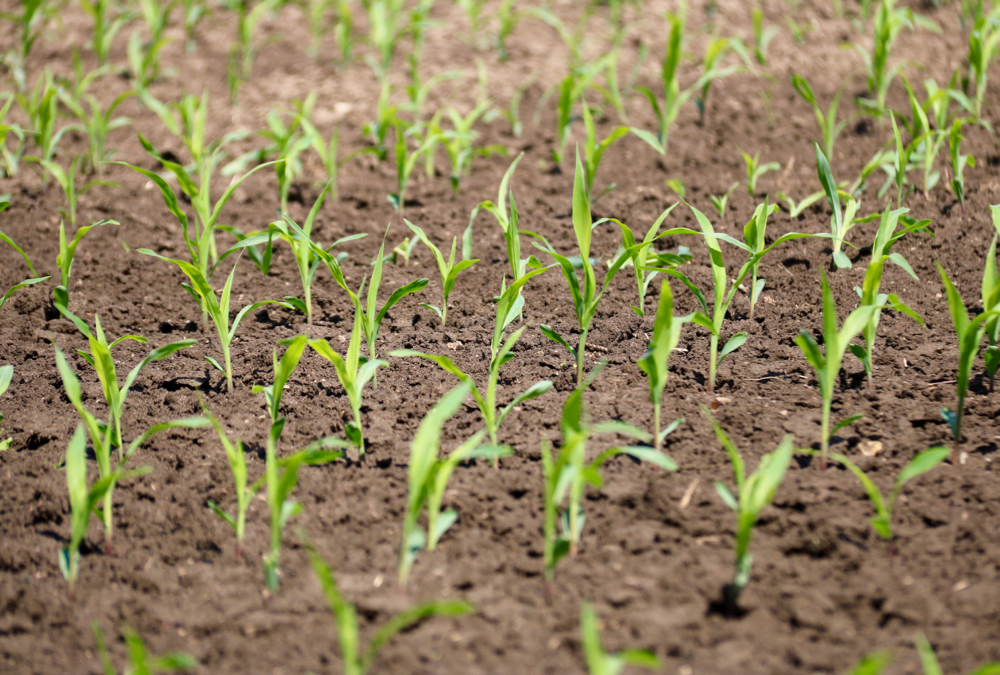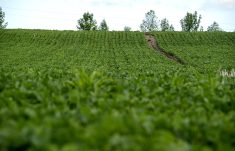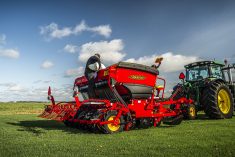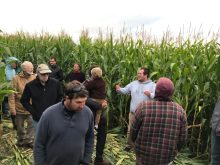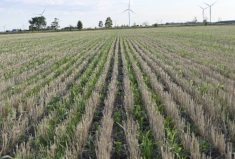Canadian farmers are worried their American neighbours are on the cusp of getting yet another competitive advantage, this time over carbon management.
Farmers in this country are not only paying carbon taxes on many of their farm inputs, they are not receiving any credits for the carbon sequestered in their soils.
Meanwhile, American legislators are working on a mechanism that would pay farmers who adopt regenerative practices, including carbon sequestration.
Why it matters: Farmers are the original carbon recyclers, pulling energy from the sun into plants, the remains of which are returned to the soil. Yet while Canadian regulators have put a price on carbon, they methods to quantify and reward that contribution are in their infancy.
Read Also
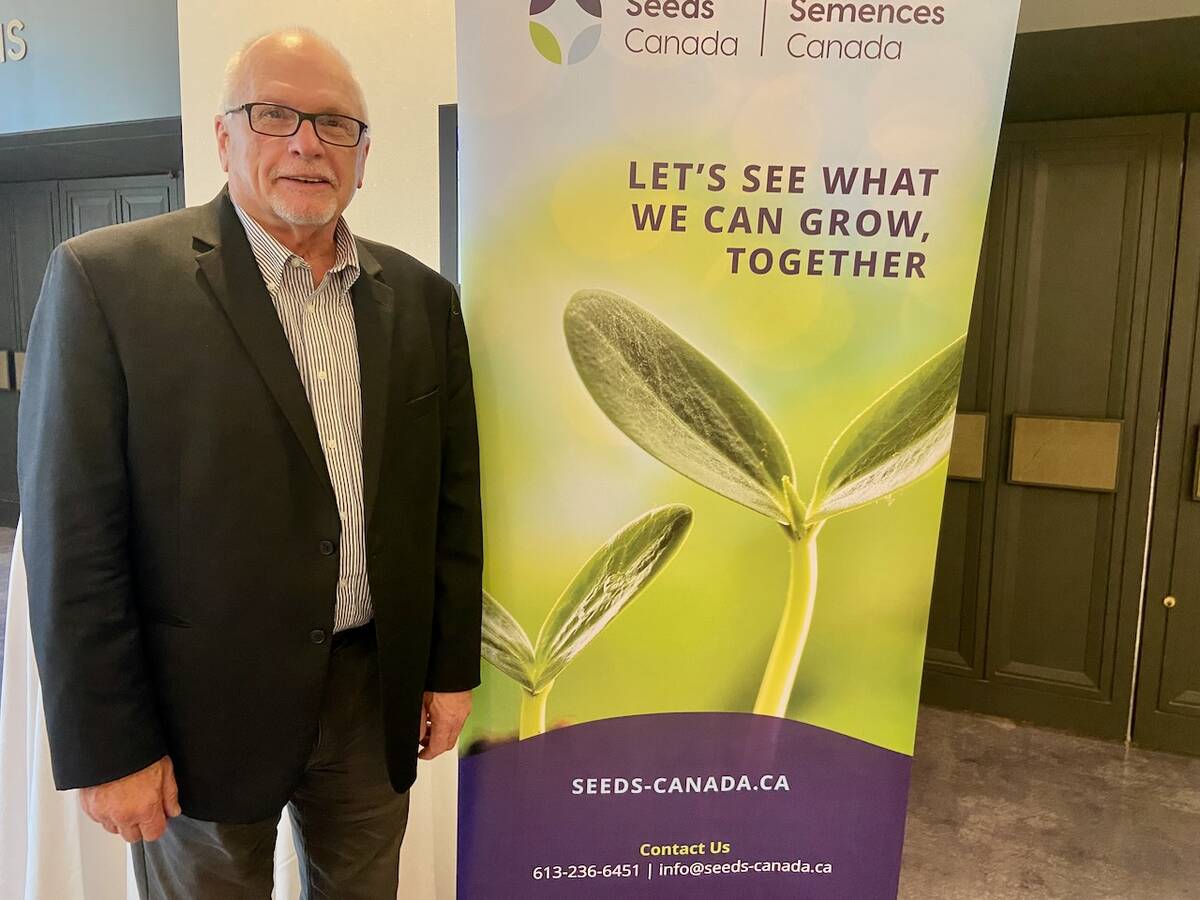
Senft to step down as CEO of Seeds Canada
Barry Senft, the founding CEO of the five-year-old Seeds Canada organization is stepping down as of January 2026.
Canadian farmers get some exemptions from carbon tax for fuel, but they pay the tax in many other ways, through surcharges from suppliers and in barn heating and grain drying.
Industry sources say that while the U.S. is forging ahead with new ways to use the carbon conundrum to subsidize its farmers, there are no such plans in Canada.
And even if there were, they might not be of use to farmers in Ontario, where climate, soil type and the stubborn continuation of conventional tillage mean that there could be little carbon sequestration to claim.
For example, Claudia Wagner Riddle, a professor in the School of Environmental Studies at the University of Guelph, says that no-till planting in the West has been shown to sequester carbon because of the more arid nature of the Prairies. In fact, according to federal government accounting, the sequestration of carbon in the West might be enough to make agriculture carbon-neutral there.
In Eastern Canada, where it is humid, it hasn’t been as easy to show that effect with no-till. Carbon has been shown to be captured in Eastern Canada through the use of cover crops, pasture and diverse crop rotations.
“Soil carbon accumulation is the result of a number of complex processes,” she says. “Farmers say look at all the carbon in my corn, but that is only the first step.”
A complex process
The carbon in the plant material has been created by photosynthesis, minus the respiration of the plants.
Then, carbon is removed at harvest. In corn, that’s about 50 per cent of the above- ground biomass. The carbon, in the form of grain or stover, is removed and consumed by animals and people and returned back to the atmosphere by decomposition of feces and by metabolism.
So that carbon is not sequestered by the original plant growth. That’s only the start of the process, says Wagner Riddle.
The rest of the soil carbon sequestration is based on everything from soil type to microbe levels in the soil.
By the time corn is broken down, for example, there could be no net sequestration.
That’s why cover crops are valuable, as they add more carbon sequestration options to the mix.
“Carbon in the soil is quite fickle,” she says.
U.S. credit system proposed
In early June, U.S. senators introduced a rare bipartisan bill – sponsored by Republicans and Democrats – that would help farmers to generate carbon credits when they use practices that absorb carbon.
The U.S. Department of Agriculture (USDA)-certified program aims to create another source of income for American farmers hit by trade uncertainty. That would create another source of subsidy for American farmers that Canadian farmers don’t get, which is already an issue with the large subsidies provided by the Trump administration.
What’s happening in Canada?
The federal tax on carbon, and similar provincial programs have allowed large companies to purchase carbon credits that offset their carbon production. That includes things like tree planting and other practices that are considered carbon friendly. This has provided revenue for those who can create the credits for polluters to purchase.
In Ontario, the previous Liberal government was well into the process of determining agriculture carbon credit potential, although well after the cap and trade system for carbon was introduced.
In 2015, it hired an organization called Climate Action Reserve, which manages carbon credit systems such as the one in California, to create a carbon credit system that included soil conservation and taking steps to limit emissions from fertilizer use.
The election of the Ontario Conservative government resulted in the elimination of that program.
Since then, the federal carbon tax system has been imposed in Ontario. It doesn’t include offsets for agriculture practices that store carbon in soils.
Keith Currie, president of the Ontario Federation of Agriculture, says that in Canada, carbon taxes and trading systems were created without enough of a plan. The taxes were imposed, but the credits side has not been developed.
“The federal government is scrambling to get a system in place for carbon credits,” he says. “It’s hard to get them to understand the value of agriculture and forestry, which is where the big sequestration takes place.”
Alberta has a program whereby farmers can qualify to earn carbon credits due to soil conservation efforts.
The program, however, is complicated. The program’s website says that “while the Alberta offset system provides a market for carbon, it comes with a number of limitations. As well as building up carbon or reducing greenhouse gas production, an activity to be approved as an offset protocol has to be beyond business as usual, proven by scientific research, quantifiable and verifiable. A problem in any one of these areas can prevent an offset from going ahead. This has happened with forages and trees.”
That raises the question about how much complexity and regulation farmers will tolerate. If the work to qualify is larger than the return, then the initiative doesn’t stand a chance.
Recognition for more than just carbon
There are other ways for agriculture to get recognition for its ecological services, including carbon sequestration as one of the services, that can avoid the complexity of measuring and managing soil carbon.
A broader program, such as the Alternative Land Use Services (ALUS) model, could make more sense, says Wagner Riddle.
Currie says that a broader environmental program is more acceptable and prized by society and food companies.
“If we look at it holistically from an environmental perspective, no-tilling isn’t just about sequestering carbon. It’s about economic efficiencies, creating better soil health, soil structure, and nutrient retention. These will play a big part in climate change going forward.
“There’s mounting frustration in the farm community that we’re not being recognized for what we’ve done.”

Take the example of farmers who have no-tilled crops for years. They’ve been storing carbon for years. Wagner Riddle says a challenge of the system is how to benefit the farmer who already has worked to create higher organic matter, compared to a farmer who has had poorer soil health practices.
The farmer starting with low carbon in the soil then can qualify for higher payments due to making quicker improvements by changing practices. “If farmers are already looking after the land, they will have a harder time to increase the carbon,” she says.
Currie says the concept of paying for good practices already in place is hard to sell to the government. But he says a no-till drill that’s 30 years old isn’t the same as a 2020 no-till drill, and costs remain, even if the farmer has been using a practice for years.
Instead of focusing on the challenge of measuring carbon in soils on individual farms, Currie and Wagner Riddle say incentives for practices known to provide soil health and store carbon may make more sense.
“Overwhelmingly globally, agriculture is still converting a lot of forest and wetlands to agriculture and whenever you do that you’re losing carbon,” says Wagner Riddle.
“On the landscape level, there are other things that could be done in the agriculture sector in terms of restoring wetlands, converting non-productive areas and all of that. That would be a big burden to put on producers to do themselves.”
Large landscape changes on agriculture land would be easier to monitor and track than soil carbon, with tools like phone apps and remote sensing that could reduce the paperwork burden.
Wagner Riddle remains optimistic that some sort of system can be developed. With the Americans moving in the direction of paying farmers for carbon sequestration, the clock is ticking.
“Will you see a cheque in the mail for sequestering carbon? Probably not, but there is some understanding of environmental goods and services and that society is OK with tax money going to those sorts of things,” says Currie.
Debate over practicality of carbon sequestration remains vigorous
The American proposal to pay farmers for good carbon saving practices has set off a debate in the United States about the best way for farmers to reduce greenhouse gas emissions.
The World Resources Institute, a global research organization recently published an article that said that while the broad practices that fall under regenerative agriculture are good for the soil and the environment, its experts are skeptical that sequestering carbon through crop production is a viable route to reducing agriculture’s impact on climate change.
“Regenerative agriculture has become the darling of many policymakers, food companies and farmers. Advocates claim a triple win: climate change mitigation, increased profit for farmers and greater resilience to a changing climate. Our view is that the practices grouped as regenerative agriculture can improve soil health and yield some valuable environmental benefits, but are unlikely to achieve large-scale emissions reductions,” says the WRI report.
Large companies such as General Mills are working with their farmer suppliers to adopt climate-friendly practices, which in turn will look better in General Mills’ sustainability report.
The WRI report expresses several concerns with carbon sequestration in soils including:
- Manure is a good way to increase carbon in soils, but manure application isn’t practical or feasible across enough acres to make a large difference. Manure is also challenging as it usually brings carbon from other farms, which means that carbon isn’t being replaced where the manure originated.
- Permanence of the carbon storage is difficult to manage. It can be affected by stage of pasture lifespan and if a farmer who has no-tilled crops for years decides to plow up a field, releasing much of the stored carbon.
- The challenge of accounting for carbon. If land is turned into pasture, where do the crops come from that used to be grown on that land? If other land is deforested to grow it elsewhere in the world, then the carbon benefit would be negated.
- The conversion of organic matter to carbon also requires significant levels of nitrogen, which may have to be provided, including by fertilizer, which has an impact on atmospheric carbon levels.
- Scaling across millions of acres is challenging, and if that’s not done then the impact won’t be significant.
Others say that the end goal of being able to store carbon in soil is worth the challenge of developing a process.
A group of seven soil scientists from the U.S. and Europe put together a rebuttal to the WRI report.
“Unfortunately, we believe the WRI post confuses rather than clarifies the scientific and policy issues concerning the role and potential of regenerative agriculture to contribute to climate change mitigation,” says the report from the soil scientists, led by Keith Paustian of Colorado State University.
The report says that there are decades of research validating the ability of practices like reducing soil disturbance, keeping residues on the soil, increasing the amount and diversity of organic residues returned to the soil and maximizing nutrient and water use efficiency by plants to increase carbon levels in soils.
They said that there is plenty of room to sequester carbon in soil, even if external amendments, like manure, are excluded.
They also argue that there is significant unused nitrogen in soils around the world now and that large volumes of synthetic fertilizer won’t be required to increase soil carbon sequestration. — J.G.



